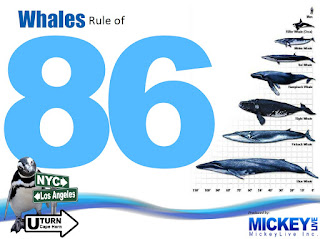Day 8 - Cape Horn and Fake Horn
I have to start my blog on Cape Horn with a shout out to Mickey Live. Mickey did daily lectures on our cruise and in the case of Cape Horn, This bit of history came from him. I also need to use a few of his slides and Windy.com (which he told me about) To tell the story.
Let's start with his picture as the cover photo (because if I used the one I took it would look like this:
 |
| Cape Horn was a little Foggy as we went around the southern side |
Ok, enough about the photography and on with the learning crap!
 |
| Location of Cape Horn |
(That isn't entirely true, you could go the other way, traverse the Indian Ocean then sail between the southern tip of Africa and Antarctica to do it)
My little daughter went there with me. (That's right, she's 31 and although I don't call her Pook very much anymore, she will always be my little daughter).
I can't remember a time when I wasn't aware of Cape Horn but it has become much more personal for a number of reasons. One of them is this:
 |
| My little daughter at the north side of Cape Horn |
Another reason was that being there was a bucket list level life experience, but most of the reasons were related to a bunch of cool stories that helped us learn more about Cape Horn. This post is about my favorite story. Favorite not because it was wonderful, favorite because it is powerful.
Let's start with the geography. Our story takes place here:
The picture above shows where the archipelago that contains Cape Horn.
So take a look just north west of Cape Horn. There is another island called Island Hershel. The story is about two things, what the islands look like, and what the wind is doing. The star of our story is Hershel Island which was commonly referred to as "Faults Horn". Mickey Live shared this slide:
Looking at the picture on the top of this page, you see that Cape Horn can be identified by a 656 foot tall hill that looks like a horn. If you look at the southern side of Hershel Island (Faults Horn) on Mickey's slide, you can also see that Hershel Island also has a 656 foot tall hill.
So imagine you are the captain of a three masted sailing ship in the mid 1700s. As you came down the western edge of South America you were tacking into gentle winds ranging from 8 to 15 miles an hour. You and the crew were relaxed. You reach the bottom of the continent and start your turn eastward. Now you have the wind on your stern (behind the ship) and it's speeding up so you are scooting along at a quick pace. You know just what you need to do, and it is this:
 |
| What You Want To Do With Your Ship |
You watch for the horn because in these winds you need to start the turn as soon as you see the horn (and before you reach it). It's a grey overcast day but you get lucky and the skies clear enough that you catch a glimpse of the 656 foot tall hill that looks like a horn. You give the command for a hard turn toward the port side (left for you land lubbers) and the ship turns putting you on this track:
 |
| Course when you turn after seeing the False Horn |
Let's say that 30 seconds into your turn the fog clears enough that you suddenly see the real Horn shaped hill off your starboard side (the wrong side, but you saw it early so you are in the best case scenario).
Before I go on, let's talk about the wind.
There is a website called "Windy.com" that you should be playing with if you aren't currently doing so. It shows what the wind, rain, snow, temperature, and waves are doing at any point in time. It shows everyplace on earth and shows it all the time. I went out to that site and looked at the current winds while I was writing this blog and did a snapshot of the winds at Cape Horn right now:
 |
| Winds of the Drake Passage Feb 22nd 2018 @ 9:18 p.m. |
The little white lines show the direction of the wind. The color underneath shows how fast they are blowing. 9:20 at night is right around dusk so the winds were more calm than usual. Typically the wind through here is anywhere from a low of around 40 mph up to hard winds that are over 140 mph. When we came to Cape Horn they were around 70 mph and we were told we got lucky because the winds "weren't as strong as they normally are". So, back to our story.
You had just transitioned from tacking into a 15 mph head wind which had you running with forward speed or 5 or 6 mph. Turn the corner and you suddenly pick up an 80 to 90 mile an hour tail wind.
As you accelerate to what might be the fastest sailing speed you have ever experienced you spot the horn, give the order, make the turn and 30 seconds later you see the real horn on the wrong side of the ship.
Hopefully you don't check the charts to see what happened or you will use more precious time. If you had the charts memorized you would realize that instead of the Atlantic Ocean it's about 2 and 3/4 miles straight ahead to this...
 |
| Actual picture of where your ship is currently headed |
...and at your current speed and direction you have about 90 seconds left until you hit it. Time for a decision. Quickly because 10 of your 90 seconds have lapsed while were recognizing what was happening. Like me, your little daughter is on the ship with you. What do you do? GO!!
Well, I don't know what you did but most of the captains who made that mistake hit the rocks and sunk their ships. The water is below freezing and if your crew (and little daughter) didn't die from the impact they probably got less than 5 minutes in the icy waters prior to hypothermia shutting all their muscles down.
As we rounded that corner (coming from east to west) I stood on the deck in 70 mph winds and imagined what it would have been like in my mind as I made that mistake (as many did). It was a grave thought. It was emotional. It was educational.
And now, as my Dad used to say...you have been educated.














/duckling-close-up-500315849-572917c93df78ced1f0b99ec.jpg)



























